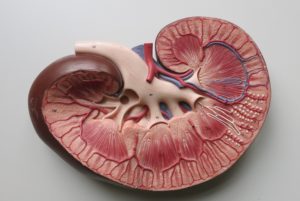
A new research letter published last week in the Journal of the American Medical Association (JAMA) shows that risk of death for people who donate a kidney for transplantation—which was already low a decade ago—has dropped by more than half since then.
According to data from the Organ Procurement and Transplantation Network (OPTN), around 6,000 people in the USA volunteer to donate a kidney every year. Previous data from 1995 through 2009 had led experts to predicted that about three of every 10,000 donors were likely to die within three months of the procedure, but the authors of this new research argue that advances in surgical techniques, donor selection, and postoperative care have since rendered that estimate obsolete.
Analysing medical records from 1993 to 2022 representing 164,593 kidney donors from across the USA, a team led by researchers at NYU Langone Health found that by 2022, fewer than one death occurred for every 10,000 donations. That translates into 36 deaths in total over 30 years.
“While we had always understood that kidney donation is safe, our findings suggest that mortality among donors is extremely rare, and the procedure is safer than ever before,” says study lead author Allan Massie (NYU Grossman School of Medicine, New York, USA), who is director of the Center for Surgical and Transplant Applied Research (C-STAR) Quantitative Core at NYU Grossman School of Medicine.
The team behind the study state that their results further show that, while their overall risk remained small, donors who were male and those with a history of high blood pressure were more likely to die within 90 days of surgery than other donors. Meanwhile, other factors—such as age, race, and ethnicity—were found to have no bearing on mortality.
According to a press release issued by NYU Langone Health, this new report is the first since that examines trends in mortality risk among living kidney donors. As a result, the authors feel that it better reflects the reality of organ donation in a time when laparoscopic nephrectomy is standard practice.
To conduct this study, Massie et al analysed information from the Scientific Registry of Transplant Recipients (SRTR), a database of transplantation centres that is overseen by the US Department of Health and Human Services (HHS). Death records were sourced from the OPTN, the non-profit organisation that administers the USA’s only transplantation network authorised by the US Congress.
The researchers calculated mortality rates within 90 days of donation, separated out into three time periods: 1993 through 2002, 2003 through 2012, and 2013 through 2022. They then compared deaths in those periods, whilst factoring in different demographic and health factors, such as sex, body mass index, and the type of surgery the donors underwent.
What they found was that roughly half of deaths occurred within the first week after donation, with the most common cause being blood loss due to surgery. In addition, mortality was similar from 1993 through 2012. Specifically, a total of 13 deaths occurred before 2003, with another 18 happening between 2003 and 2012. Contrastingly, there have been far fewer deaths since 2013, with five donors dying within 90 days of their procedure.
“These results demonstrate that the current guidelines used to inform potential kidney donors of their risks need to be updated to reflect nearly a decade of safety improvements,” said study senior author Dorry Segev (NYU Grossman School of Medicine, New York, USA).
“As a kidney donor and research scientist in the field, it is reassuring to see the progress we have made,” said study co-author Macey Levan (NYU Grossman School of Medicine, New York, USA). Levan is also the vice president of patient and donor affairs for the OPTN and had donated her kidney to her cousin in 2009.












